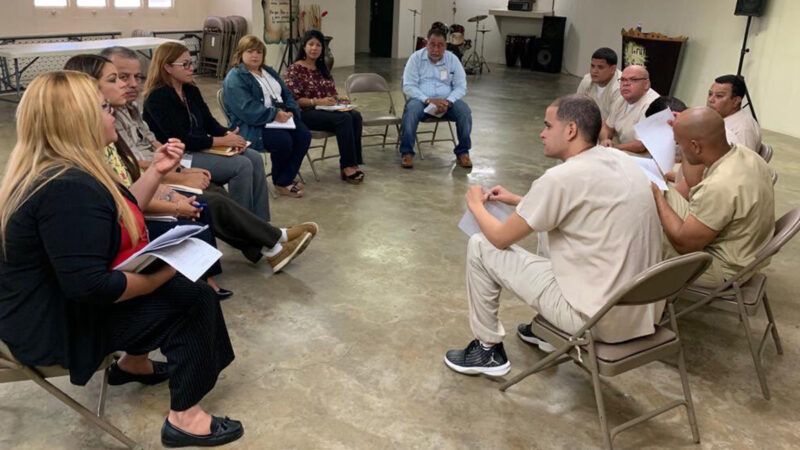Puerto Rican Prisons Allowed Inmates To Work for Themselves. It Was a Huge Success.
These self-employed prisoners earned more than inmates in traditional prison jobs and were more likely than other inmates to be rehabilitated.

People associate the words prison labor with coercion and exploitation, with inmates paid peanuts to do menial work for the government or its contractors. If you hear that phrase, you probably don't think of people working for themselves on their own terms.
Yet for nearly two decades, some Puerto Rican prisons permitted a very different sort of prison labor, with incarcerated workers running their own enterprises behind bars. It was a tremendous success until COVID-19 put it on ice. And it might soon return.
At the beginning of the century, prisoners at an art program in the Guayama Correctional Complex started thinking about ways they might make money from their creations. Someone suggested launching a business. Someone else proposed that they make it a cooperative, so everyone could have a say in how the operation would be run. But Puerto Rican law barred people with a criminal background from becoming member-owners of a co-op.
The convicts wrote to the then-Gov. Sila María Calderón, to ask if the rules could be revised. Calderón was receptive to the idea, and in 2003 the commonwealth amended the law to let prisoners join cooperatives as long as they displayed continued good behavior.
And so was born the Cooperativa de Servicios ARIGOS. To join, artists imprisoned at Guayama could either pony up for a $20 share or contribute labor worth an equivalent amount.
The Liga de Cooperativas de Puerto Rico, a trade association for co-ops, offered help with marketing and training. Soon there were several more employee-owned companies in the island's penitentiaries, engaged in agriculture, sewing, and other trades. One group even operated a café right outside a prison—mostly for employees and visitors, but members of the surrounding community were also welcome to stop by for coffee or pastries. In the ensuing years, more than 100 prisoners would be involved in running such enterprises.
The co-ops had to give 15 percent of their revenue to the prisons that housed them, a rate later increased to 25 percent. When necessary, they paid extra for security or travel costs incurred by their operations.
All this offered immediate benefits for the workers. They honed their skills, gained more autonomy, and earned much more, on average, than inmates in traditional prison jobs. It also offered benefits for the prisons, which were wary about convicts working for themselves but didn't mind getting a cut of the profits. (Even behind bars, wise officials understand that they can collect more wealth if they loosen their regulatory leashes a bit.) And it offered benefits for society at large, because the worker-owners were more likely than other inmates to be rehabilitated.
Jessica Gordon-Nembhard, an economist at the John Jay College of Criminal Justice who has studied the Puerto Rican system, repeatedly interviewed former prisoners who had been sentenced to 99 years or more but were deemed ready for release after working at these self-managed companies for less than a decade. In the first 10 years of Cooperativa de Servicios ARIGOS, more than 50 of the enterprise's members had been released and just two had reoffended.* By comparison, she says, Puerto Rico's recidivism rates normally range "from 40 percent to 60 percent within three years of release."
But when COVID hit and Puerto Rico's prisons locked down, these businesses were among the activities the authorities shuttered. Since then, both the inmates and their supporters on the outside have lobbied hard to let groups like ARIGOS restart.
Lymarie Nieves Plaza—a marketing director at a Puerto Rican credit union who is also a prison chaplain, and who has worked closely with the co-ops in both capacities—is optimistic that the new head of the Department of Corrections and Rehabilitation will allow self-employment to flourish behind bars again. The revived system might not work exactly the same way as before; some prison officials, for example, would like to raise their share of the revenue above 25 percent. But even that seems preferable to not allowing this useful, self-directed labor to return at all.
"I've been 20 years working with them," Nieves says of the prison cooperatives. "It's a beautiful project….We can't let them think we are just over."
----------------------------------------------------------
* CORRECTION: This sentence originally misstated the source of this statistic.
